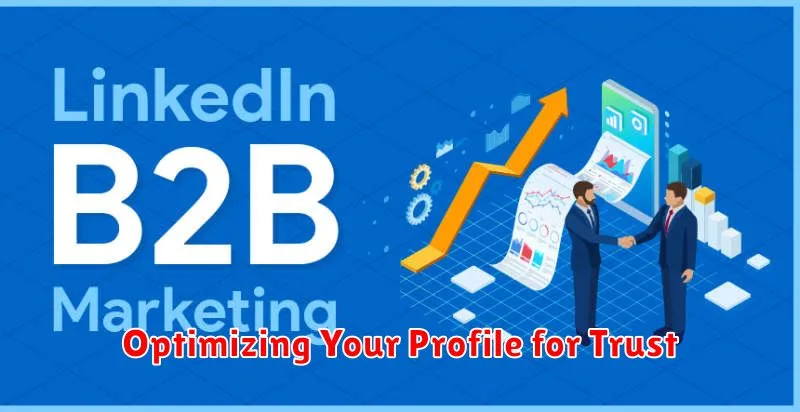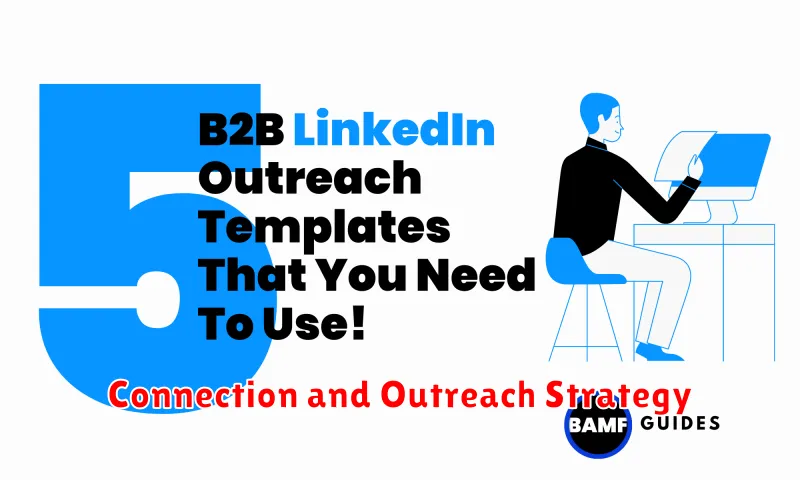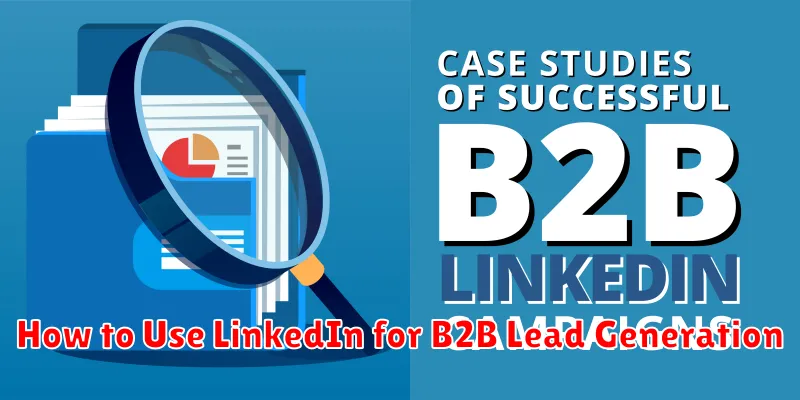LinkedIn is a powerful platform for B2B lead generation. With millions of professionals actively engaging, it presents a unique opportunity to connect with potential clients, build relationships, and ultimately drive business growth. This guide will provide actionable strategies and insights on how to effectively leverage LinkedIn for B2B lead generation, turning your profile and company page into powerful lead magnets.
Learn how to optimize your LinkedIn profile for lead generation, engage with your target audience, and utilize advanced search techniques to pinpoint ideal prospects. We’ll cover strategies for creating compelling content that attracts B2B leads, leveraging LinkedIn groups for networking and lead nurturing, and using LinkedIn Sales Navigator for streamlined prospecting. Whether you’re just starting out with LinkedIn or looking to refine your existing strategy, this guide will equip you with the tools and knowledge to successfully generate high-quality B2B leads.
Why LinkedIn Is a Goldmine for B2B
LinkedIn stands as the premier social networking platform for professionals, making it an unparalleled resource for B2B marketing. With a user base exceeding 830 million globally, LinkedIn offers direct access to a vast network of decision-makers, industry leaders, and potential clients. Its focus on professional networking creates an environment where businesses can establish credibility, build meaningful connections, and generate high-quality leads. Unlike other platforms, LinkedIn’s audience is actively engaged in business-related content, seeking industry insights and solutions, creating a receptive audience for targeted marketing efforts.
LinkedIn provides a robust suite of tools specifically designed for B2B engagement. Targeted advertising allows businesses to precisely reach their ideal customer profile based on demographics, job titles, industry, and company size. LinkedIn Groups provide a platform to engage in relevant industry conversations and establish thought leadership. Content marketing on LinkedIn, through articles and posts, allows businesses to share valuable insights and position themselves as experts in their field, driving organic reach and fostering trust with potential clients.
The platform’s emphasis on professional identity and verified information ensures a level of data accuracy and authenticity unmatched by other social networks. This allows for highly effective lead generation and targeted outreach. The ability to directly connect with prospects and engage in personalized conversations makes LinkedIn an invaluable tool for nurturing relationships and driving conversions. By leveraging LinkedIn’s powerful features and actively engaging with its professional community, businesses can unlock significant growth opportunities and establish a dominant presence within their target market.
Optimizing Your Profile for Trust

Building trust is essential for success in today’s digital landscape. A trustworthy profile fosters credibility and encourages engagement, whether for business, networking, or personal branding. Key elements of a trustworthy profile include accurate and up-to-date information, a professional presentation, and consistent activity. Transparency is also crucial; be upfront about your credentials and experience. Avoid exaggerating or misrepresenting information, as this can quickly erode trust.
Beyond the basics, consider incorporating elements that further enhance trust. Testimonials and recommendations from colleagues or clients provide valuable social proof. Sharing your expertise through articles, posts, or presentations can establish you as a thought leader in your field. Active participation in relevant online communities also signals genuine interest and engagement, contributing to a trustworthy image.
Finally, maintain a consistent and authentic presence. Regular updates, thoughtful contributions, and genuine interactions demonstrate commitment and foster a sense of reliability. Remember, building trust is an ongoing process that requires consistent effort and attention to detail. A well-optimized profile builds confidence, strengthens connections, and ultimately contributes to positive outcomes.
Using Advanced Search Filters
Advanced search filters empower users to refine search results with greater precision. By utilizing specific criteria, users can narrow down vast quantities of data to locate the exact information they require. These filters can be based on various factors including date ranges, file types, keywords, author names, and other relevant metadata. Employing these features significantly reduces search time and increases the relevance of returned results.
Understanding the available filters is essential for effective searching. Familiarize yourself with the specific options provided by your search platform. Some common advanced search operators include the Boolean operators (AND, OR, NOT), wildcard characters (*), phrase searching (” “), and field-specific searching (e.g., author: “John Smith”). By combining these operators and understanding their functionality, users can construct highly targeted search queries.
Experimentation is key to mastering advanced search techniques. Start with a basic search and progressively add filters to refine your results. Observe the impact each filter has on the returned information. This iterative process allows for a deeper understanding of how the filters interact and enables the development of more effective search strategies for future use. Through practice, users can become proficient in utilizing advanced search filters to efficiently locate the information they need.
Creating Value-Focused Content
Value-focused content prioritizes providing tangible benefits to the audience. This means understanding the audience’s needs, challenges, and interests, and then crafting content that directly addresses those points. Instead of simply pushing a product or service, value-focused content seeks to educate, inform, or entertain in a way that resonates with the audience and leaves them feeling enriched.
Creating this type of content requires careful planning and execution. Research is crucial to identify key audience pain points and information gaps. Content creators should then focus on providing practical solutions, actionable advice, or valuable insights related to those areas. Measurable results, such as increased engagement, lead generation, or improved brand perception, are the ultimate goals of value-focused content.
By consistently delivering valuable content, businesses can establish themselves as trusted resources and build stronger relationships with their audience. This approach fosters loyalty and encourages long-term engagement, ultimately driving sustainable growth.
Connection and Outreach Strategy

Building strong connections and conducting effective outreach are crucial for achieving our goals. This strategy focuses on identifying key stakeholders and developing tailored communication plans to engage them. We will prioritize building relationships based on mutual benefit and shared values. This approach will ensure our message resonates with the target audience and fosters long-term partnerships.
Our outreach efforts will utilize a multi-channel approach, including direct communication, social media engagement, and community events. We will track key performance indicators (KPIs) such as engagement rates, response times, and conversion rates to measure the effectiveness of our strategy and make data-driven adjustments as needed. Consistent monitoring and evaluation will allow us to optimize our approach and maximize our impact.
Success relies on clear communication, active listening, and a genuine interest in building relationships. By focusing on these core principles, we can cultivate meaningful connections that contribute to our overall success.
LinkedIn Messaging Templates
Connecting with people on LinkedIn requires a thoughtful approach. Using templates can help you craft effective and personalized messages that resonate with your audience. Whether you’re reaching out to a potential client, recruiter, or fellow professional, having a few go-to templates can save you time and ensure you’re communicating clearly.
Here are some key elements to include in your LinkedIn messages: a personalized greeting, referencing a common connection or shared interest, a clear and concise statement of your purpose for reaching out, and a polite call to action. Remember to keep your messages brief and professional.
By utilizing these tips and creating a few tailored templates, you can confidently connect with others on LinkedIn and build valuable professional relationships.
Joining and Engaging in Relevant Groups
Joining relevant groups, whether online or in-person, is a powerful way to expand your network and advance your career. Seek out groups aligned with your industry, profession, or specific interests. These groups offer opportunities to connect with like-minded individuals, learn from experienced professionals, and stay updated on industry trends.
Active participation is key to maximizing the benefits of group membership. Don’t just join – engage! Contribute meaningfully to discussions, share your expertise, and offer support to other members. Building genuine connections within these groups can lead to valuable mentorship opportunities, collaborations, and career advancement.
Consider joining groups such as professional associations, industry-specific forums, alumni networks, and local meetups. Careful selection ensures you invest your time in communities that offer the greatest value and align with your career goals.
Using LinkedIn Ads for Precision
LinkedIn Ads offer a powerful way to reach a highly targeted professional audience. Unlike other platforms, LinkedIn allows you to laser-focus your campaigns based on specific job titles, industries, skills, company size, and even seniority level. This granular control helps minimize wasted ad spend and ensures your message reaches the most relevant prospects, driving stronger engagement and ultimately, better ROI.
With various ad formats available, including sponsored content, sponsored InMail, and text ads, you can tailor your approach to your specific marketing goals. Whether you’re looking to generate leads, drive website traffic, or build brand awareness, LinkedIn Ads provide the tools and targeting capabilities to achieve success. Leveraging the platform’s professional data also enables you to personalize your messaging, creating more impactful connections with your target audience.
To maximize the effectiveness of your LinkedIn Ads campaigns, consider these key best practices: define clear and measurable objectives, meticulously segment your target audience, craft compelling ad copy, and continuously monitor and optimize your campaigns based on performance data. By adopting a strategic and data-driven approach, you can harness the power of LinkedIn Ads to achieve your marketing objectives and drive business growth.
Tracking LinkedIn Lead Performance
Tracking lead performance on LinkedIn is crucial for understanding the effectiveness of your marketing efforts and optimizing your campaigns. By monitoring key metrics, you can identify what’s working, what’s not, and where to allocate your resources for the best return on investment (ROI). This includes analyzing metrics such as lead generation form submissions, content engagement (likes, comments, shares), and website traffic originating from LinkedIn. Regularly analyzing these metrics allows you to refine your targeting, messaging, and content strategy to improve your lead generation results.
Several tools can assist you in tracking your LinkedIn lead performance. LinkedIn’s native analytics platform provides valuable insights into campaign performance and audience demographics. Third-party marketing automation and CRM platforms can further enhance your tracking capabilities by integrating LinkedIn data with other marketing channels and providing a holistic view of the customer journey. Using these tools effectively can help you identify high-performing campaigns, understand lead behavior, and make data-driven decisions to optimize your lead generation strategies.
Ultimately, effective lead tracking on LinkedIn empowers you to generate more qualified leads, nurture them effectively, and convert them into customers. By understanding which tactics are driving the most valuable leads, you can refine your approach, improve your sales pipeline, and achieve a higher ROI from your LinkedIn marketing investments. Consistent monitoring and optimization are key to long-term success in generating and nurturing high-quality leads on the platform.
Nurturing Leads Through the Platform
Lead nurturing is the process of developing relationships with potential customers throughout the sales funnel. Our platform provides tools to effectively nurture leads, guiding them towards conversion. This involves strategically delivering relevant content and engaging with them through various touchpoints, fostering trust and establishing your brand as a valuable resource.
Key features include automated email campaigns, personalized messaging, and lead scoring. Automated email campaigns allow for consistent communication based on lead behavior and demographics. Personalized messaging ensures targeted content delivery, increasing engagement and effectiveness. Lead scoring prioritizes leads based on their level of interest and engagement, allowing sales teams to focus on the most promising prospects.
By leveraging these platform capabilities, businesses can streamline the lead nurturing process, improve conversion rates, and ultimately drive revenue growth. A nurtured lead is a more informed and engaged lead, significantly increasing the likelihood of a successful sale.

